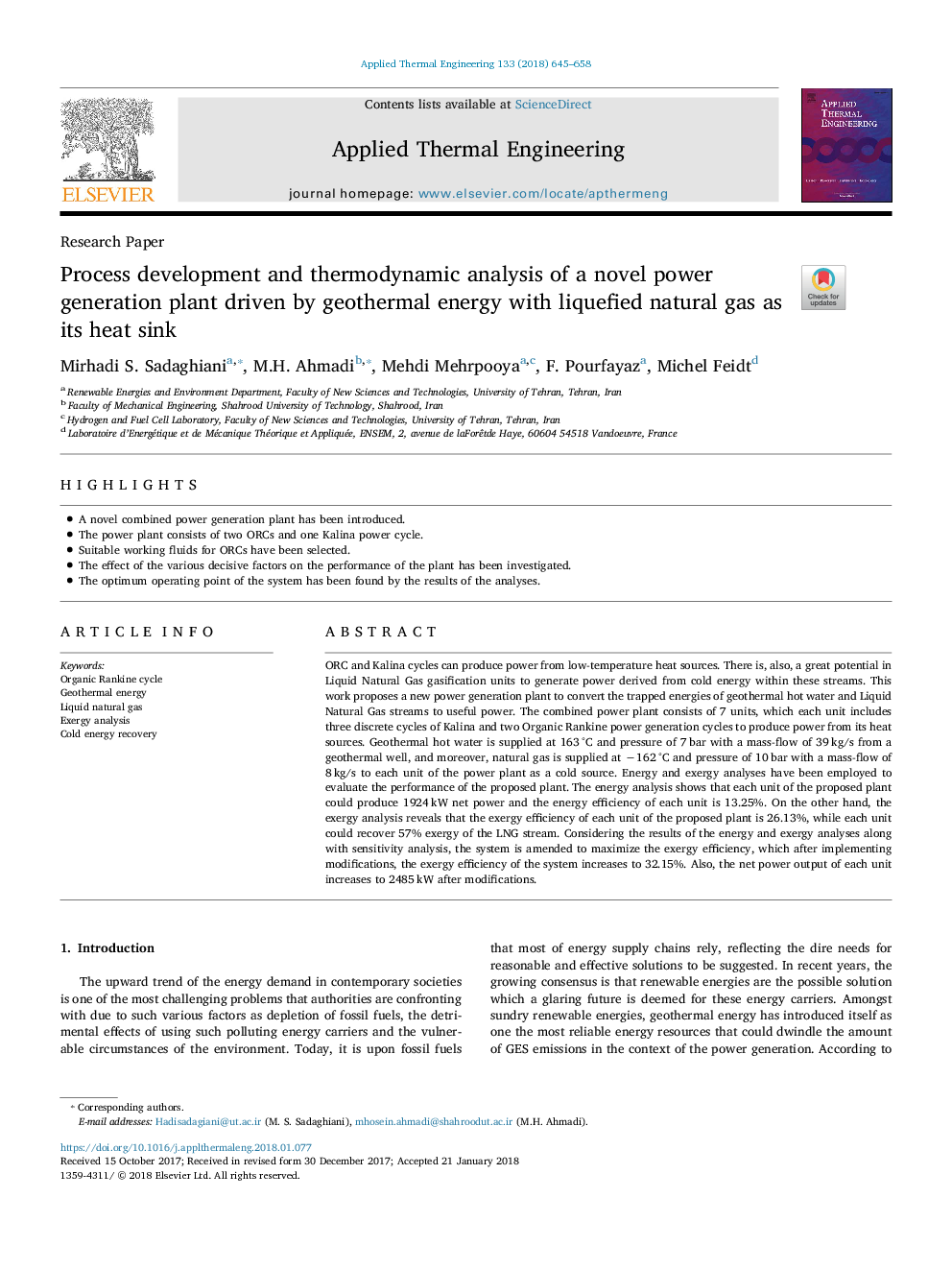ترجمه فارسی عنوان مقاله
تحقیق مقاله فرآیند توسعه و تحلیل ترمودینامیکی یک کارخانه تولید برق جدید که توسط انرژی زمین گرمایی با گاز طبیعی مایع شده به عنوان غرقابی گرمایی
عنوان انگلیسی
Research PaperProcess development and thermodynamic analysis of a novel power generation plant driven by geothermal energy with liquefied natural gas as its heat sink
| کد مقاله | سال انتشار | تعداد صفحات مقاله انگلیسی |
|---|---|---|
| 145818 | 2018 | 14 صفحه PDF |
منبع

Publisher : Elsevier - Science Direct (الزویر - ساینس دایرکت)
Journal : Applied Thermal Engineering, Volume 133, 25 March 2018, Pages 645-658
ترجمه کلمات کلیدی
چرخه رنکین ارگانیک، انرژی زمین گرمایی، گاز مایع طبیعی، تجزیه و تحلیل اگزرژی، بازیابی انرژی سرد
کلمات کلیدی انگلیسی
Organic Rankine cycle; Geothermal energy; Liquid natural gas; Exergy analysis; Cold energy recovery;

